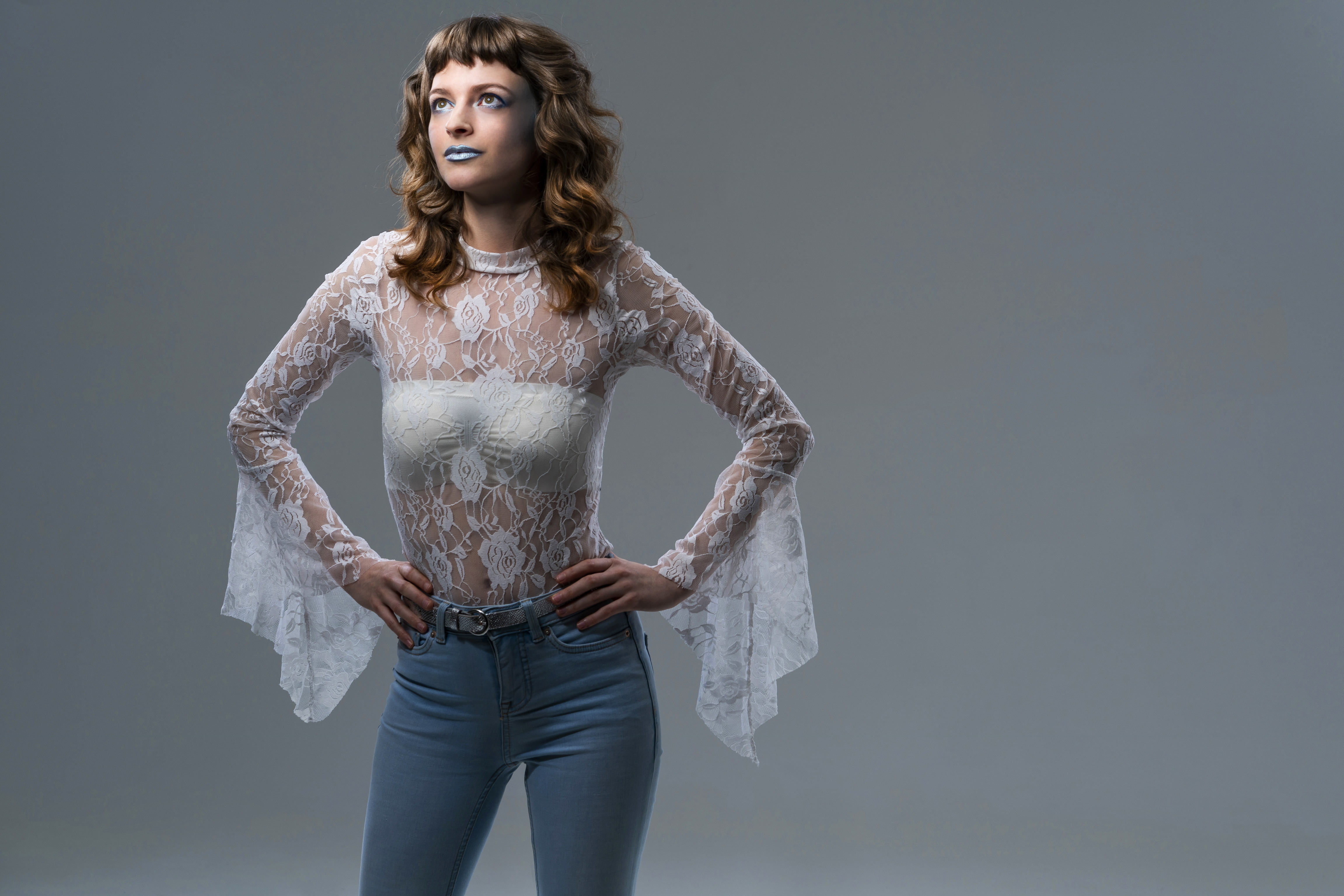Finding unity in diversity – An interview with pianist Manon Moemaers, aka “MAM”
Manon Moemaers is certainly a unique woman – and a unique artist.
Trained as a classical pianist at the Royal Conservatories of Brussels and Liège, she counts both Rachmaninoff and The Prodigy as being among her musical influences. Under her stage name, “MAM,” she writes and performs acoustic piano pieces that self-consciously defy musical categorisation, while for her electro band “X-ing Stars” – which consists of her and her partner, Piotr Paluch – she produces music that is far more conventionally mainstream. She’s fascinated by science, and is currently involved in a project exploring the relationship between music and synesthesia. She holds distinctive and thoughtful views on a variety of subjects, including but not limited to music, science, aesthetics, and the nature and limits of human knowledge.

Oh, and she wants to go the moon. Literally. (More on this later.)
I caught up with Manon the other day at the Aloft Bar Lounge near Schuman, where she will be performing this Saturday evening as a featured act in Brussels Urban Classical, a new music event on the Brussels scene which aims to combine the best of classical and urban genres in a live setting.
We spoke about a wide variety of subjects, including her personal life, music, philosophy, science, synesthesia – and of course her long-held desire for space travel.
Thomas Moller-Nielsen: Have you always wanted to be a musician? How old were you when you started playing music?
Manon Moemaers (“MAM”): I’ve wanted to be a musician for as long as I can remember. I started playing music when I was a baby: I was two years old when my parents bought me a violin, and I was three years old when I started playing the piano. I’ve never really enjoyed playing the violin, but I’ve always felt at home playing the piano.
TMN: Do you play any instruments other than the piano? Do you sing?
MAM: I’ve started to sing more and more these days – for instance, I occasionally sing for my electro band, “X-ing stars” – but I’m not as good at singing as I am at playing the piano. I’m not as professional. I also play the drums, the guitar, the recorder, and the bass guitar. But I only really play them for fun. And when I’m performing as “MAM”, I only play the piano, although I often accompany people who are singing.
TMN: Having browsed through your YouTube channel and website, it seems to me that you’ve been influenced by quite a number of different musicians: Yann Tiersen, Mozart, Ludovico Einaudi, Debussy, Chopin, even Céline Dion! Who, and what, would you say are your biggest musical influences?
MAM: I come from a family that lives and breathes classical music. Both of my parents are successful professional classical musicians: my father is a trained classical pianist, and my mother is a trained classical singer. So, naturally, the first music I ever listened to was classical music: Debussy, Stravinsky, Beethoven, Mozart, Liszt, Prokofiev, Rachmaninoff, all were big influences on me as a child. But as I grew older I started to listen to other things. I listened to a lot of rock as a teenager: Foo Fighters, Good Charlotte, and Muse. I still like them. I’m also a fan of electro music, like Chemical Brothers and The Prodigy.
TMN: Several of your YouTube videos show you playing in public spaces, for instance at train stations. Is it fair to say that this is something you enjoy doing?
MAM: I like having fun. It’s a different experience playing in front of people at a train station, compared to playing a live concert. There’s less pressure, for one thing. But I enjoy doing both of them.
TMN: Why is your new album called “Classical or Not? – Colours of Sound”?
MAM: I chose the first part of the title, “Classical or Not?”, because I wanted to express the idea that, although I largely use classical music techniques, methods and instruments – namely, an acoustic piano – to make my music, the music that I ended up producing for the album really isn’t classical in any conventional or straightforward sense: it’s influenced by pop, rock, electro-music, things like that. In a sense, the title is really a question for listeners: I don’t want to define my music as either classical or as non-classical. I want to let the public decide.
The second part of the title, “Colours of Sound”, was chosen because of an experience I had with a psychic some time ago. I played her a piece I had written – “Moon & Sun’s Friendship”, which is on the new album – and she then went on to describe to me what she saw as I was playing. I found her description fascinating.
TMN: What did she see?
MAM: She claimed she saw a fantastic array of colours emanating from me, from my very fingertips; and I remember she said she saw a coloured beam of light coming straight out of the top of my head, which then slowly spread out and filled the room. I found that really interesting. In a strange way, it cohered with my own sense of what I feel when I play music. I, too, feel a kind of energy emanating from me when I play music, an energy which fills the room.
TMN: On this theme, you say on your website that you’re collaborating on a project with a synesthete. How is this project going?
MAM: Yes, I am working with a young woman called Marlene, who is (unlike the psychic) a medically diagnosed synesthete: she claims to see colours when she hears music. My goal is to try to visually represent her experience when she listens to music, in a music video; to try to show others what it is that she sees when she hears music. It’ll obviously be a very difficult project, not least because Marlene claims that the colours she sees only exist “in her head”, rather than “out there in the world”, as in the case of other synesthetes. But it’ll be fascinating to try, and to see what we eventually come up with.
TMN: A lot the music that you’ve written, like “Liberté”, or “Moon & Sun’s Friendship”, seem to me to be rather emotional, but spiritually uplifting songs. Is it fair to say that this is the kind of music that you enjoy making the most, or that speaks to you the most?
MAM: Yes. I want listeners to feel good after listening to my music. The subject matter of my songs can often be quite negative and sad, but I always want to add ‘light’ to it, to give the audience a positive, happier feeling at the end. The goal is always to make the listener feel better after listening.
TMN: You say on your website that “Liberté” was written after you discovered a “shadow” in you, and that when this shadow passed it was like being “at the end of the tunnel where you can see the light”. Could you elaborate on this a little?
MAM: Well, I had spent a long time in my own shadow; that is, I had spent a long time exploring the darker, sadder, more shadowy parts of myself. This was due to a decision that I had made, to take the time to discover the darker part of myself. The song “Liberté” was written at a time when I had had enough, when I was through exploring that part of myself. And when I was writing it, I felt like was seeing light at the end of the tunnel. That’s the best way I can explain it.
TMN: But isn’t that a bit strange, to take a conscious decision to explore a dark part of yourself? I mean, most people don’t choose to feel sad!
MAM: Yes, maybe, but I thought it was necessary in order to know more about myself: about who I am, and what my weaknesses are.
TMN: Was this exploration of this darker side of yourself one that took place personally, or professionally?
MAM: Both.
TMN: What would you say music means to you?
MAM: Music is like magic; there’s something inherently magical about it. Music allows you to feel, and express, emotions and feelings that you otherwise wouldn’t be able to feel or express. It allows others to feel what you can feel in a way that nothing else really can. It’s almost like a universal language. But it’s even more powerful than that: it can also express lightness, darkness, abstract concepts, divine things, in a unique and magical way.
TMN: From your website and from talking to you, it seems to me that you’re very interested in science – and not just the science of synesthesia – and that you’re especially interested in the interaction and connection between science and music. Can you say more about this?
MAM: Yes, I’m interested in scientific research about music. I also think that there’s a sense in which, in principle, everything can be explained by science. But I also feel that even if we did one day have a complete scientific understanding of music, there would still remain something special about it. Something magical.
TMN: For some reason this reminds me of the famous John Keats line, about how Isaac Newton destroyed the poetry of the rainbow by explaining it scientifically. I suppose you would disagree – that understanding music scientifically won’t destroy its magic?
MAM: Yes, I disagree. Knowing something, or understanding something in a scientific sense can never diminish that thing’s beauty. It can only add to it.
TMN: You’ve applied for the #dearMoon Project, run by the Japanese billionaire businessman Yusaku Maezawa in collaboration with Elon Musk’s Space X company. The aim of the project is to bring artists to fly around moon as a means of inspiring themselves, their art, and the rest of humanity. Can you say more about that?
MAM: My fascination with space travel began when I was a child, when I was fortunate enough to meet Dirk Frimout, the first Belgian to go to space. When I met him, he actually promised me that when I was an adult he would take me to space! And now I’m an adult, he’s been very supportive of my application for the #dearMoon Project.
In general, though, I’m fascinated by what kind of experiences I would have if I went to space – what I would see, what I would feel, what I would experience, and so on. I’m especially curious to know what impact it would have on my art, and what kind of music I would produce after coming back. I also just have the sense that everything is linked, that everything is connected, and that going to the moon would allow me to understand and appreciate that link better.
TMN: Can you say a bit more about this “link”?
MAM: It’s difficult to put into words, but I believe that there’s a link, a connection, a bond, an energy, that exists between all things, large and small, between the stars and atoms, between all things divinely created – I mean, we already know that the structure of the atom resembles, to some extent, the structure of the solar system. In other words, I think that there’s a certain harmony that exists in the world. One of my main goals is to try to study and understand this harmony, this link, and how it is that people can perceive such different things, can be such different beings, but nevertheless be united by something true and eternal, by some divine truth.
TMN: So do you think that if you went to space you might be able to demonstrate the existence of – or even observe – this link, this divine truth?
MAM: Maybe. But if even if I did, I don’t know if I, or anyone else, could express it as the truth. Everyone will put a different name on it, and will see and express it differently. But we need to do serious research to understand how this one divine truth, this link, is connected to everyone and everything around it, and how others can be connected and unified despite their often very great differences.
A similar theme is present in my own music. I like listening to, and playing, many different kinds of music. The style of my songs, and the subject matter, can often be radically different, but underlying it all there’s an underlying unity, a connection. And in the same way, I think that there’s an underlying unity, a connection, a magic, that unifies all of music, and all of us.
TMN: So finding unity in diversity, that’s the goal?
MAM: Yes. Exactly.
Further details
For more information about Manon, please visit her website or her Facebook page.
Manon would also like to add that she has recently successfully completed a crowdfunding campaign, where she received a significant contribution from La Sacem, the Society of Authors, Composers, and Publishers of Music in France. She wishes to thank them for their contribution and for the faith they’ve shown in her.
To book Manon for any upcoming concerts, please email her agent (and Mainecoon Records producer) Piotr Paluch, at mail@piotrpaluch.be.
For any press-related matters (e.g. interviews), please email Denis Bogaerts at info.pianomam@gmail.com.



